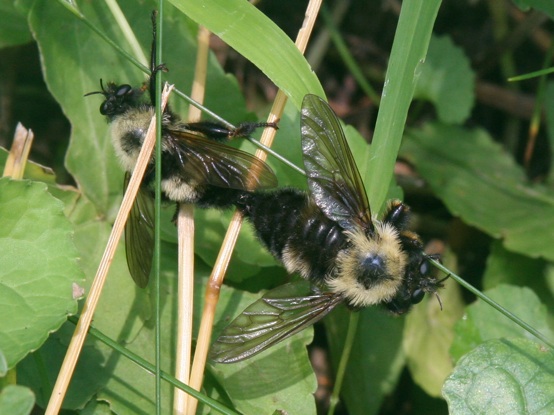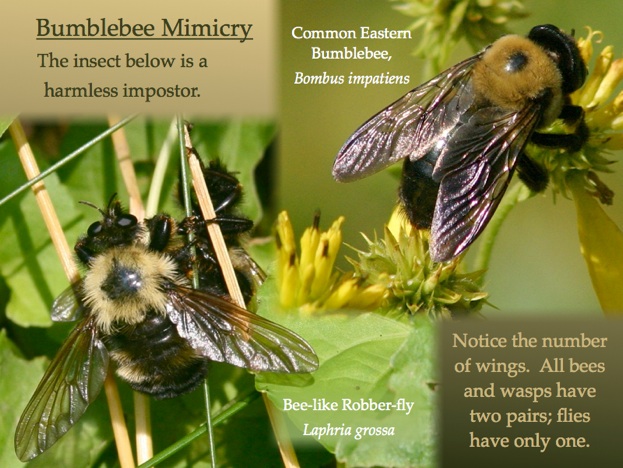The Nature
Observer’s Journal
The Nature
Observer’s Journal

Batesian Mimic:
Bees Do It -- or do they?
Chuck Tague
The pair of bumblebees coupled in the grass caught my eye. I thought of Ella Fitzgerald or Joan Jett and hummed “Let’s Fall in Love” as I moved my camera into position. I’d never seen bumblebees mate before, and it seemed wrong that they were doing it in June. Bumblebees mate in fall. Males do not even exist until it’s time to fertilize the new queens. After the fertile queens are prepared to hibernate and start a new colony in spring, all other bumblebees die.

To solve the mystery of the over-eager bumblebees I needed to identify the species so I could look up its life cycle. As I compared the photos to the references I was so focused on the patterns of their abdomen and thorax I never noticed some significant details. The insects had no obvious stingers and each only had one pair of wings. They were not bumblebees but cleverly disguised impostors, Bee-like Robber-flies, Laphria grossa. They sure fooled me.
The Bee-like Robber-fly is an amazing example of Batesian mimicry, a clever strategy used by harmless mimics to avoid predators. They imitate a dangerous model. Many types of flies look like bees or wasps. So do some moths.
Stinging insects warn potential predators with bright colors and patterns. One encounter with an angry yellow jacket or bumblebee and a chipmunk will never again bother a black-and-yellow insect. The flash of yellow-on-black is enough to give pause to a swooping songbird and give a harmless mimic an extra split-second to dodge the attack. The mating robber-flies, however, went far beyond adopting a bumblebee’s colors. They replicated the bee’s size and shape as well.
When bees do it, or copycat flies, or any other animals for that matter, they are vulnerable to predators. The robber-flies easily fooled me as I snapped a dozen photographs. Could they fool a chipmunk or a Blue Jay?

See other examples on the Nature Observer’s Batesian Mimicry page.
Friday, June 4, 2010

